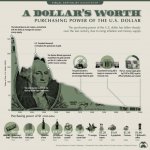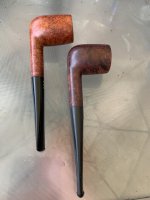The destruction of small town America was completed in the late 70s and 80s. High interest rates, low returns on farm goods, and the loss of a family’s abilities eek out a good existence due to inflation and high oil prices left our small towns weakened. The 90s ushered in drug addiction and rural America has been in a free fall. So many families broken and destroyed.
Whenever I hear somebody whining about the government today, I can’t bit recall how much whining went on over 20% interest rates in 1982 and lament how many more lives are still waiting to be destroyed.
Yeah, it's amazing the narratives those academics come up with. I'm sure there were professors back in 1913 explaining why creating the federal reserve was such a great thing.
Back in 1876, when our dollars were truly based on a Troy ounce of gold at $20, my great grandfather, veteran of the 12th United States Missouri cavalry regiment, wanted to get married again after his first wife died.
Another veteran of the 12th Missouri cavalry had a good looking younger sister, who was available for marriage, but she insisted that my great grandfather buy her 220 acres of land five miles West of Humansville plus an 80 acre farm for her aging parents beside theirs plus 20 acres of timber in Cedar County, from the Estate of Granville Nolan, a dead Confederate, lynched by Jayhawkers.
During the war, as a young girl, her father and other members of the 8th Missouri State Militia cavalry (loyal) had bushwhacked every one of of those Jayhawkers, their blue uniforms not sparing them from the wickedness they’d done to a poor Rebel tending his farm, and his family, raping his wife in front of their children. She said it was the most beautiful piece of land on earth.
So, a gorgeous virgin bride in 1876 cost my great grandfather 3 dollars an acre for 300 acres plus another .$2.50 an acre for the 20 acres of timber.
A lifetime of wedded bliss later, my great grandmother Paralee died nursing the family during the 1918 flu pandemic.
By this time, Paralee had a daughter named Eva that if anything was even more beautiful than her, and she’d insisted that her suitor buy her a 240 acre farm next her parents and build her an even larger home, plus a new Packard car, which set him back about $50 an acre for the farm, or $12,000, plus at least that much more for the Packard and the new home about 1910.
The price of a gorgeous virgin bride had skyrocketed in just one generation, even on the gold standard.
When her father died in 1920, Eva became executor of his estate and by then his 220 acres was worth $100 an acre, even on the gold standard.
Through negotiations, my great uncle Elmer received 60 acres free and clear and my grandfather had to pay $66 an acre ($16,000) for the 240 acres and home and barns and stock, which he borrowed from the Federal Land Bank at 6% interest.
A drought in 1936 caused Elmer and his wife to give up farming, have an auction, and his rich sister Eva paid Elmer $3.50 an acre for the 60 acres. By then the Roosevelt administration had commandeered all the gold, put it in Fort Knox and the Federal Reserve Bank of New York (where it all still sits) and raised the official price to $35 an ounce.
That didn’t help the price of farmland at all, in 1936.
Eva paid Elmer one $3.50 Kaywoodie Drinkless per acre.
My father said Elmer and Cora moved to Bakersfield California and they worked like dogs, just like slaves, in the fields of the other man, and neither saw Humansville again.
During World War Two the United States government borrowed and spent about three trillion dollars of our present day money. Every dollar was spent on things that had almost no value after the war.
My father had sharecropped Elmer’s 60 and his aunt Eva had promised him if he ever had $210 she’d sell him Elmer’s 60.
My father was 4-F due to histoplasmosis he’d caught cleaning chicken barns, and young men were so scarce in little towns the government had some program where young men could work at feed mills and receive high wages, which were tax exempt if they took their pay in feed.
Daddy said it was horrible, he felt just like a slave punching a time clock, but he drew his pay in feed, fed out a bunch of hogs, sold the hogs for $4,000, and thankfully never again had to be a wage slave for another man.
He paid off the $3,000 balance on the 1921 Land Bank mortgage, but when he went to pay Eva $210 for Elmer’s 60, she said her daughters wouldn’t let her sell it for less than $15 an acre so he paid Eva $900 for the land, which left him $100.
So, by 1944 the price of an acre of crop land in the Ozarks was about four Kaywoodie Drinkless pipes, more or less.
When my grandfather discovered Eva had made her little boy pay over four times what Eva paid Elmer, she took a five dollar Winchester Model 66 (that I still own) and ran off to kill Eva, claiming she ought to have killed her years ago.
My grandfather and father caught her before she came in range of Eva, disarmed her, and Eva died in the Humansville hospital an ancient old lady in 1966, and I remember her funeral.
A neighbor of mine, who is a multimillionaire, said he got tired of being land poor and took a quarter quarter section of land just like Elmer’s 60, with no house, gravel road access, five miles from poverty riddled Humansville, and listed it online for $250,000 ($6.250 an acre) and sold it so fast he said he wished he’d asked $350,000. The people from Colorado who bought it are putting up a $500,000 home that’s nice, he says, but not the half million dollar mansion you’d expect.
$15 in 1944 is worth about $225 today.
Elmer’s 60 is worth close to thirty times more than my grandmother was so furious over the exorbitant price my father paid.
My Amish renter pays $25 an acre rent and I spend it all to keep improving the farm.
The beauty of that is, that a 2022 dollar buys a dollar’s worth of herbicide in 2022, so I can keep the brush down in the fence rows. If my ancestors could pay for it, I ought to at least keep it from growing up in brush, you know?
——
And I have given you a land for which ye did not labour, and cities which ye built not, and ye dwell in them; of the vineyards and oliveyards which ye planted not do ye eat.
 www.usinflationcalculator.com
www.usinflationcalculator.com











































